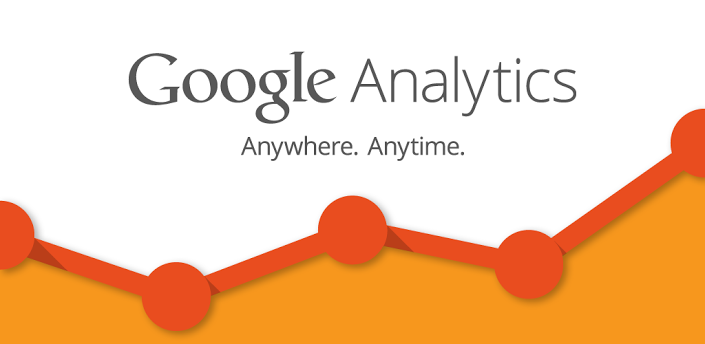In the meantime, measuring how social media is turning into actual business results is not impossible. In fact, one of the greatest tools at measuring and reporting social media success is freely available and probably already installed on your website: Google Analytics!
In this post, we’ll cover basic Google Analytics reports, set up goal conversions, look at how to review conversions from social media, and pull all of the most important reports into a single downloadable social media marketing dashboard.
Identify and Set Up Goal Conversions
The first step in measuring the success of a business’s social media strategy is determining what within the website needs to be measured. Common goal conversions include form completions, downloads, time on site, amount of pages viewed, or even a specific sequence of pages viewed.
To set up a goal within Google Analytics, click your Admin tab, select your view, and click Goals > + New Goal.
Goal description is simply the name this conversion will appear as in reports. Leave Goal slot ID as is and select Destination for the Type.
Under the Goal details field enter the URL of the thank you or completion page, excluding the domain name. Optionally, if you know the lifetime value of one email subscriber, enter it in the Value field. You can even specify a sequence of pages required before a conversion is counted (for example, a multi-page form). You can enter this information in the Funnel field.
Identify Which Platform Drives the Most TrafficTo accurately measure how social media is influencing overall website traffic, you must be able to view traffic referred by social media networks independent of all other traffic sources.
This information is in the Channels report, which can be found by clicking
Acquisition > All Traffic > Channels.
Using the date selection, this report can be compared month-over-month, year-over-year (or any other time frame) to show changes in traffic, engagement, and conversions over time.
Clicking on the Social channel dives deeper into this report, revealing all individual referring networks.
View Conversions Assisted By Social Media
There are a lot of ways to review the number of conversions from social media, the easiest being the Social view of the Channels report mentioned above.
For example, what happens if a consumer discovers the brand by visiting the site through a tweet, comes back three days later through a remarketing ad, and becomes a customer? Pay-per-click is awarded the attribution, even though social media is how the customer discovered the business.
To see how many conversions social media has assisted in, open theAssisted Conversions report by clicking Conversions > Multi-Channel Funnels > Assisted Conversions.
Clicking the First Interaction Analysis tab at the top of the Assisted Conversions report shows us that Social would be attributed with 941 conversions in a First Click Attribution model.
Create a Social Media Marketing DashboardSometimes, proving the value of social media marketing is all about how the data is presented. There’s no easier way to do this than to set up a social media marketing dashboard within Google Analytics.
To get started creating a new dashboard, click Dashboard > New Dashboard. Select Blank Canvas, name your dashboard, and select Create Dashboard.
The most important piece of every widget in this dashboard is filtering out any non-social media traffic. This is done by adding a filter which matches,Only show + Default Channel Grouping + Containing + Social.
If you need a little more guidance in creating a social media dashboard, you can click here to automatically import my dashboard and learn from the widgets I’ve created.
Measurement Starts With Organization & UnderstandingMeasuring and reporting on how successful your social media marketing efforts are at driving web traffic is not impossible; in fact, it’s relatively easy with just a few basic reports. It all begins with having a well-planned and organized strategy with clearly defined goals.
The more clear it is to everyone in your business exactly what the social media goals are and how you will measure them, the easier it becomes to show the value of social media marketing. If you need more help clarifying the role of social in your own organization, download Simply Measured’s on-point guide below.













 RSS Feed
RSS Feed